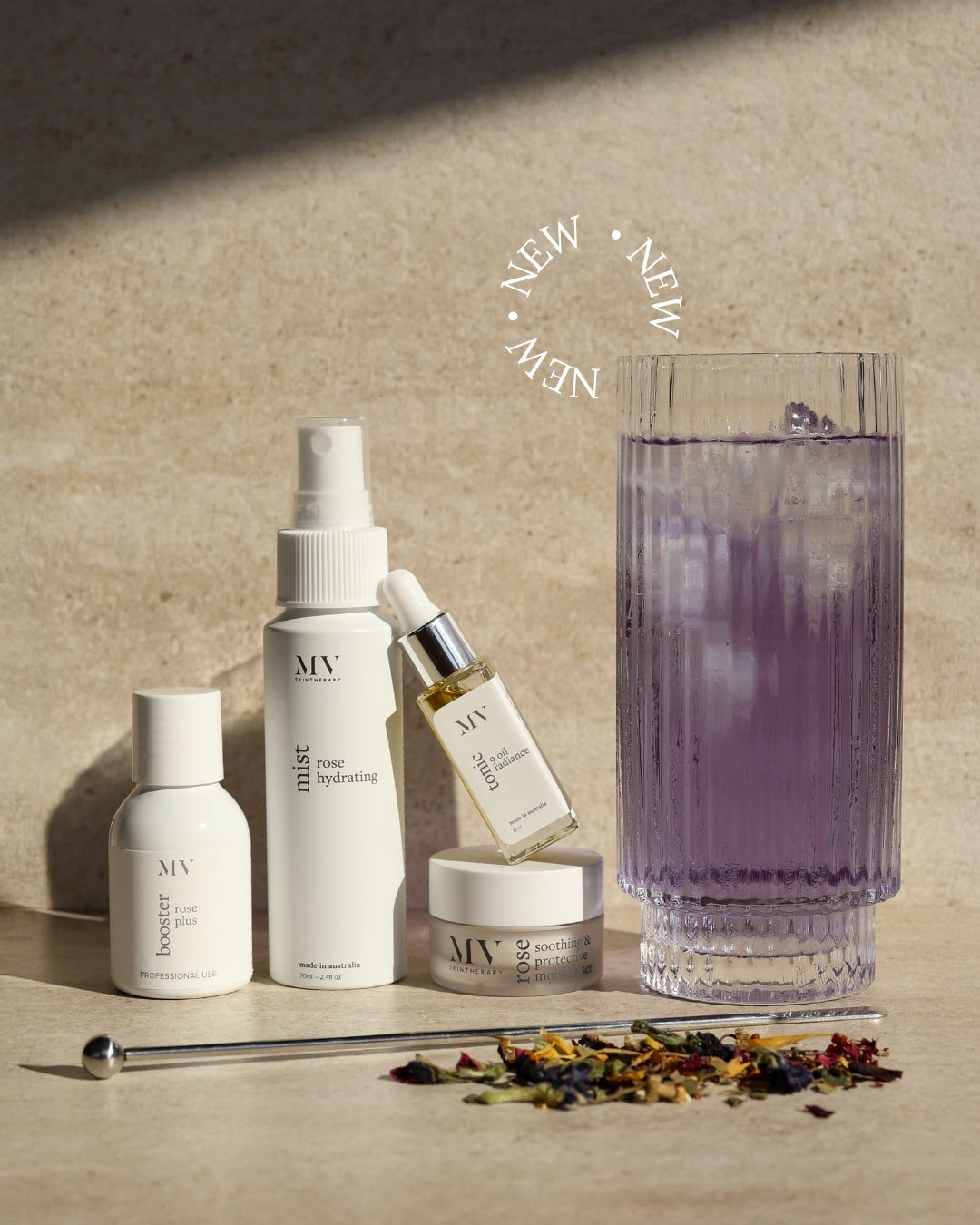
It's easy to assume that the self-care benefits of a skincare practice are simply a result of the specific products we use on our skin.
And of course, in many ways they are.
Topically applied products are absorbed into your bloodstream, which is why MV is 100% free of petrochemicals, parabens, mineral oils, and endocrine disrupters, just to name a few.
But research shows that when transformed from routine to ritual, a dedicated skincare practice can also have a positive impact on not just our physical well-being (i.e., our skin), but on our mental well-being as well.
The difference between routine and ritual

Psychologists agree that there's a difference between a routine and a ritual, and there's a place for both in our modern world. Routines are repetitive actions that can help us feel more control and ground us in predictability and are becoming more and more important thanks to the unpredictability and 'always-on' nature of modern life. An easy way to conceptualise routine, is the example of starting the day by going for a run every morning. While routines play an important part in our well-being, they can become repetitive and often lack a larger purpose.
That's where rituals come in.
Rituals are elevated routines that are imbued with meaning. They are intentional, reflective by nature, and can promote mindfulness. Rituals can also help us feel grounded, and transform the seemingly simple moments of everyday life into something more.
The psychological benefits of a skincare ritual
Research shows that rituals are used by both humans and animals to reduce feelings of anxiety1. But rituals don't need to be grand - even small, seemingly simple ones can make a big difference.
When it comes to the power of ritual, skincare is no exception.
Here at MV, we've long advocated for skincare rituals over routines (you can find our skincare rituals here). And there's plenty of research to back us up.

Studies have found that following beauty rituals like cleansing your face, massaging your skin, and applying skincare can help foster mindfulness and also help calm the nervous system. For example, a study in BMC Psychiatry journal found that self-care practices can be an important and effective treatment of anxiety2 , while a study published in Biomedical Research journal found that facial massage reduced anxiety and negative mood status3 (and of course is great for the skin itself - all reasons why we encourage facial massage with many of our products.
Creating your own skincare ritual
The key to transforming your skincare routine into a skincare ritual, is to calm the mind and the body into a tranquil and relaxed state.
This can look like breathing deeply, relaxing your shoulders and taking in the aromatic experience of your products, slowly and gently massaging your face without rushing (we recommend a full 2-minute facial massage for our 9 Oil Radiance Ritual), and of course practicing mindful techniques during your skincare ritual and being fully present throughout.
Incorporating the right ingredients into your skincare ritual is also important and can have the added benefits of improving mood and well-being. For example, studies have shown that the use of lavender can help reduce anxiety, and improve symptoms such as restlessness4 . Lavender is also an excellent oil to treat burns, rashes, skin infections and sun-damage.
Here at MV, our lavender of choice is French 'High Altitude' with its high Linalyl Acetate content, which is the key to boosting this oil's inherent antibacterial and antiviral properties.
A skincare ritual is a powerful sensory experience that unites touch, breath and scent. Even in the busiest of days, we encourage you to think about how the small shift can transform your daily skincare routine (that focuses only on the skin itself), into a therapeutic ritual that both nurtures your skin and soothes your senses.
1 Eilam, D., Izhar, R., & Mort, J. (2011), ‘Threat detection: Behavioral practices in animals and humans’, Neuroscience & Biobehavioral Reviews, 35(4), 999-1006.
2 Katzman, M.A., Bleau, P., Blier, P.et al. (2014), ‘Canadian clinical practice guidelines for the management of anxiety, posttraumatic stress and obsessive-compulsive disorders’, BMC Psychiatry, 14(1), 1-83.
3 Hatayama, T., Kitamura, S., Tamura, C., Nagano, M., & Ohnuki, K. (2008), ‘The facial massage reduced anxiety and negative mood status, and increased sympathetic nervous activity’, Biomedical Research, 29(6), 317-320.
4 Koulivand PH, Khaleghi Ghadiri M, Gorji A. (2014), ‘Lavender and the nervous system’, Evidence-Based Complementary and Alternative Medicine, online.







